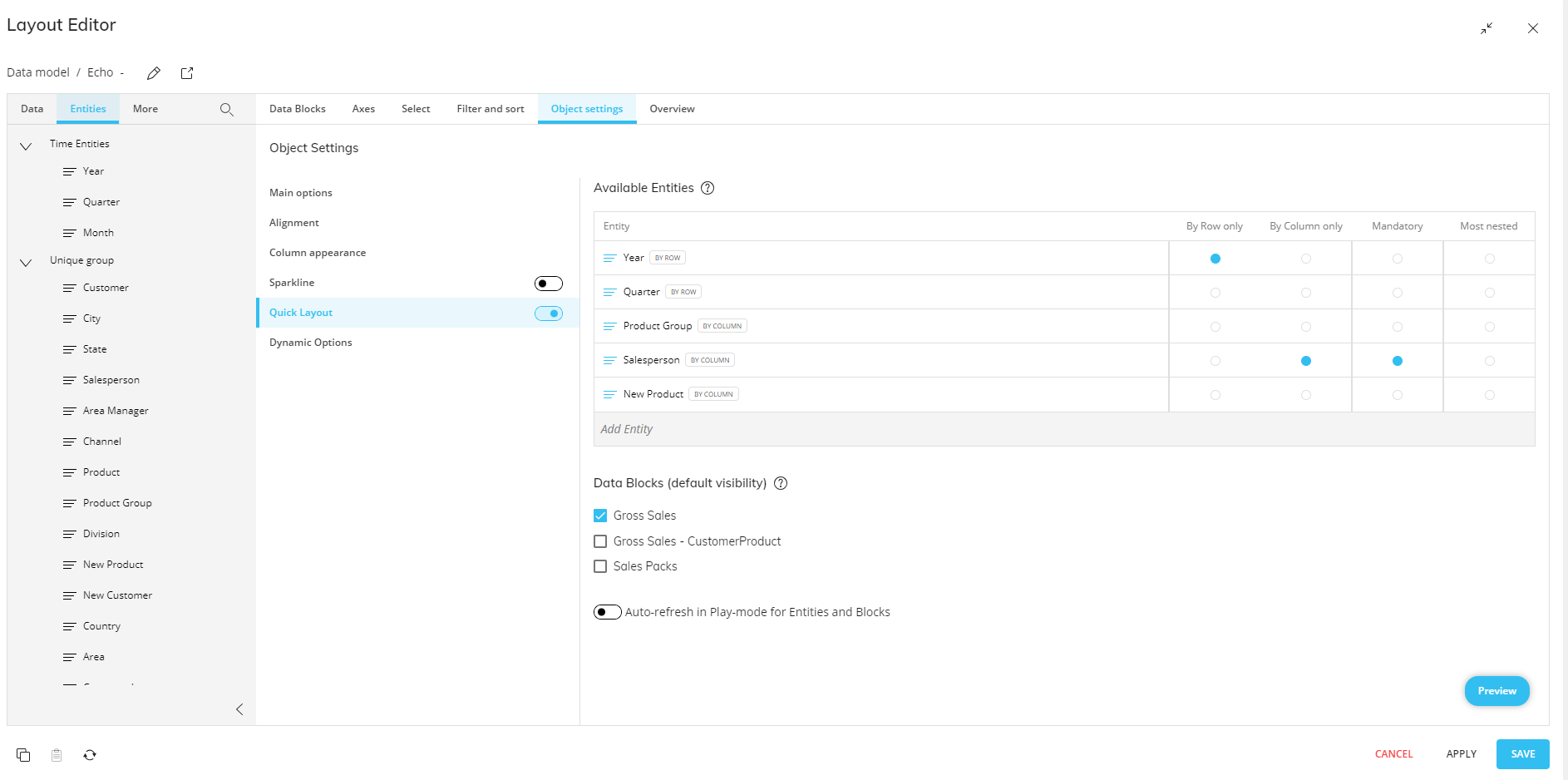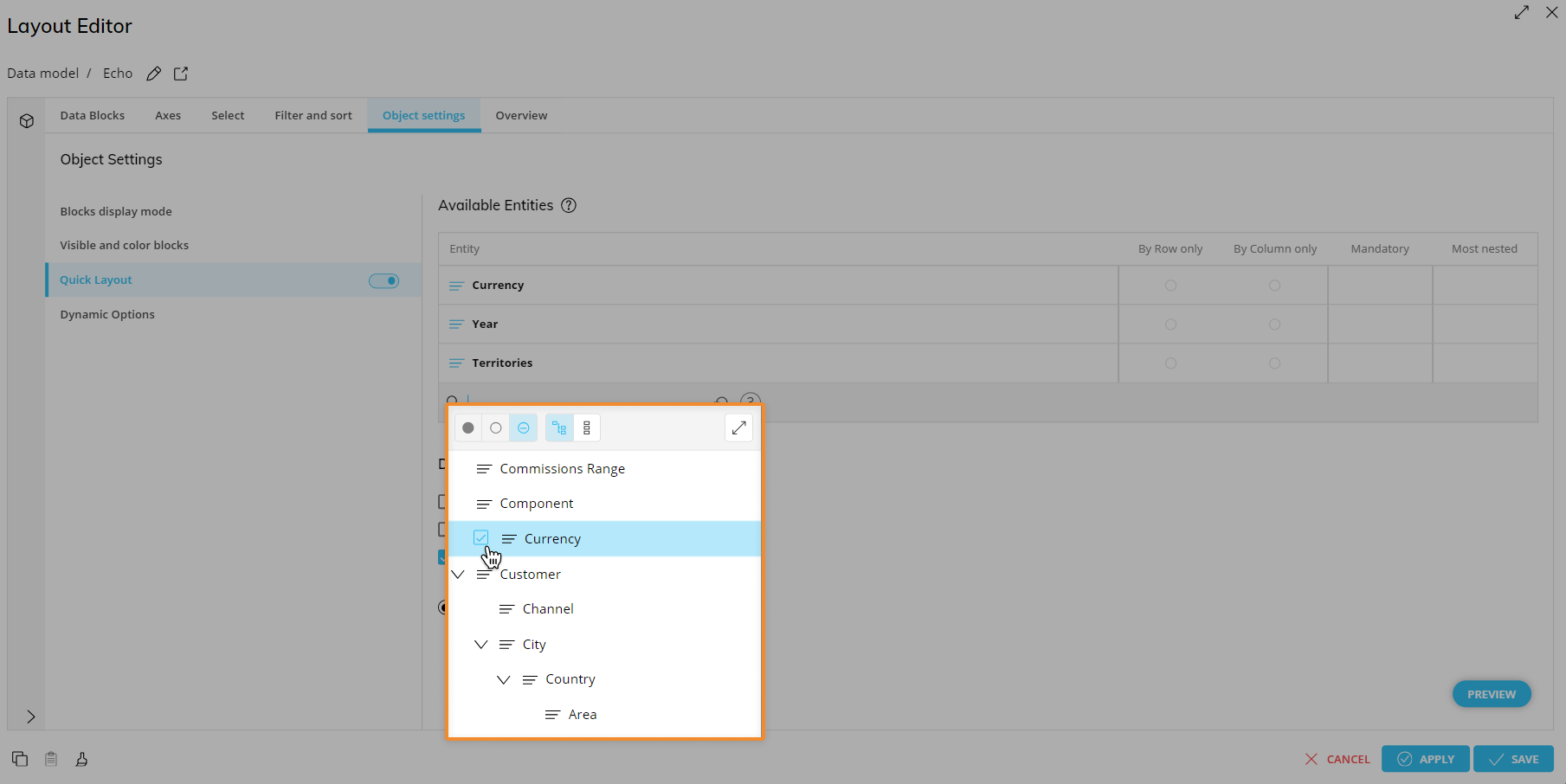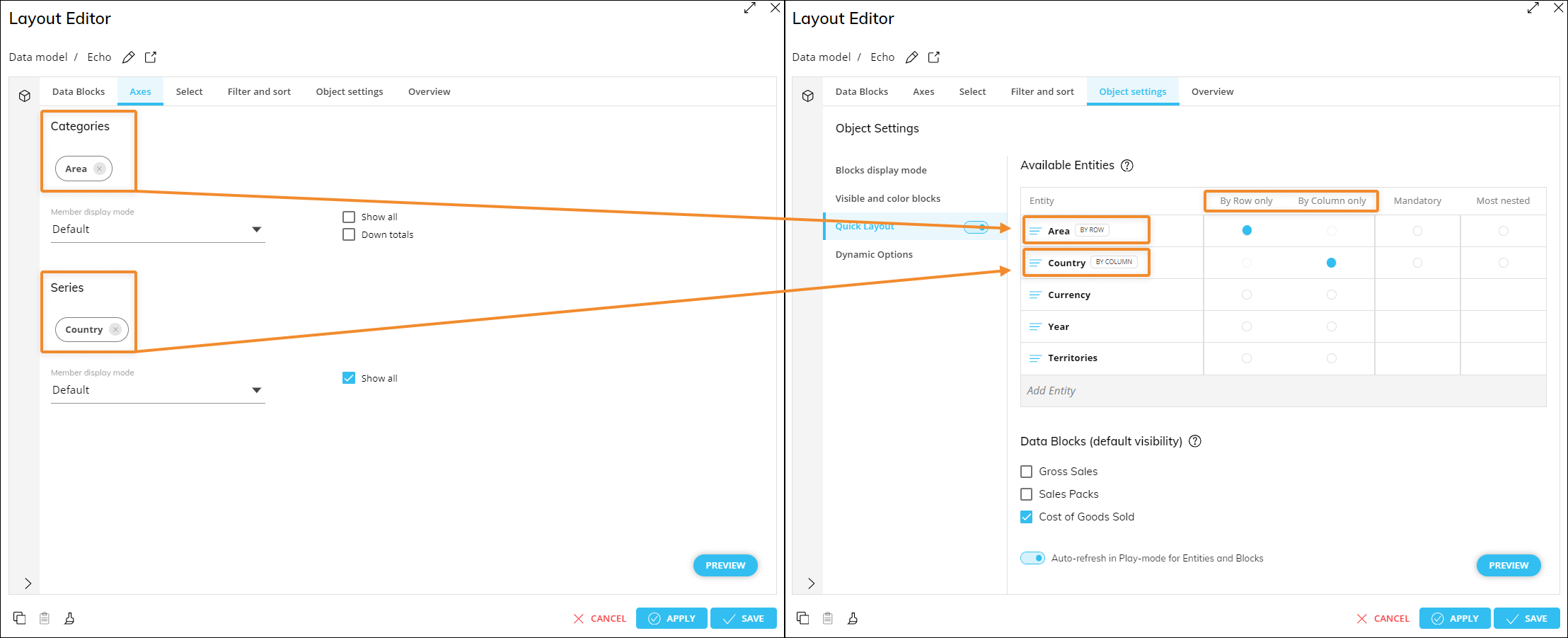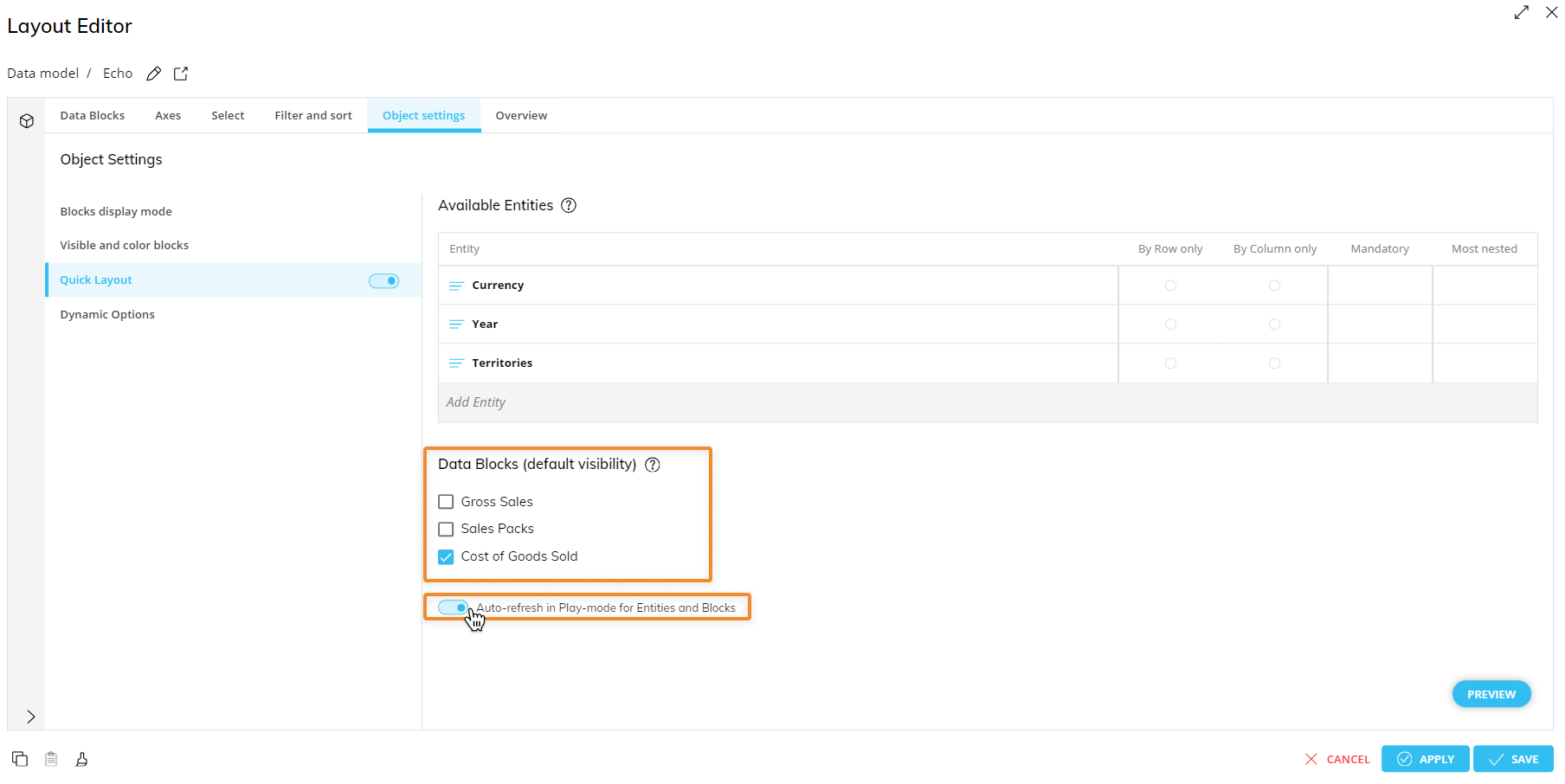💡This article contains version changes.
Spot the light bulb icon? That means you’ll find helpful details about what’s changed across versions. Read more about version changes here.
The Quick Layout feature is possible for the Data View, Cartesian Chart, Radar, and Pie Chart Objects.
The Quick Layout allows you to configure restrictions and permissions of the Entities chosen in a Layout, so the end user can add by Row or by Column or remove them altogether in Play Mode. This feature is particularly useful when the full Layout editor is disabled in Play Mode, but you still want to allow users to see data for various different Entities in different configurations.
From the Quick Layout option under the "Object settings" tab, you can configure what the end user is able to change or not when interacting with the Object in Play Mode and how they can display the data.
Quick Layout is enabled by default.
How to create a Quick Layout
To configure a Quick Layout, you must be in Design Mode and access an Object's Layout. From the Object Settings tab, click on the Quick Layout submenu page. A table listing the Entities that were configured in the "Axes" tab is under the "Available Entities" heading.

The available options in the Quick Layout configuration table are as follows:
Entity. This column displays the Entities that were chosen in the Axes tab. Next to the Entity name is a tag indicating whether the Entity was configured by row or by column in the Axes tab. This is not exclusive for the end user unless specified, which is done so by selecting either the corresponding "By Row only" or "By Column only" radio button.
By Row only. This column displays a radio button that, once selected, appears blue-filled and restricts the corresponding Entity to only be available by Row for the end user. The Entity is not allowed to be configured by Column.
By Column only. This column displays a radio button that, once selected, appears blue-filled and restricts the corresponding Entity to only be available by Column for the end user. The Entity is not allowed to be configured by Row.
Mandatory. This column contains a radio button that, once selected, appears blue-filled and makes the corresponding Entity a mandatory element of the Object. The Entity cannot be removed from the Axes by the end users in Play Mode and must configure the Object.
💡 Most-nested. This column contains a radio button that, once selected, appears blue-filled and assigns the corresponding Entity as the most-nested Entity. The most-nested Entity is the most detailed data. Only one Entity may be configured as most-nested.
In version 14.2.2 and earlier, enabling the Most-nested functionality makes the Entity mandatory, and the "Mandatory" radio button for that Entity will also become selected and turn blue automatically. If you deselect the Entity as most-nested, the mandatory selection will not automatically deselect. To remove the mandatory assignment of an Entity, you must deselect the "Mandatory" option manually.
Below the table are more options to consider when configuring the Quick Layout for the end user.
Data Blocks (default visibility). This section lists the Data Blocks configured in the Data Blocks tab. These are selected by default. When selected, the Blocks are visible to the end user in Play Mode by default. When unselected, the Data Blocks are not visible to the end user in Play Mode by default. The end user can select/deselect Blocks while in Play Mode under "Data" in the Object toolbar via right click when they want to display/hide Data Blocks. Read more about the Quick Layout for the end user below.
Auto-refresh in Play Mode for Entities and Blocks. Below "Data Blocks (default visibility)" is a toggle for auto-refresh. This toggle is disabled by default, which is in the leftmost position. When disabled, the Object is not refreshed automatically after every change made by the end user in the Data submenus or the Quick Layout window (called Rows & Columns for the end user in Play Mode). The user will only experience a refresh after applying changes, even during the configuration in Play Mode, and clicking outside of the Data submenu. When enabled, the toggle is in the rightmost position. Enablement of this toggle will refresh the Object every time a change is made in the Data submenus. The auto-refresh option can be enabled or disabled again by a developer at any time.
How to configure the Quick Layout
To set up possible configurations and/or restrictions to a Layout for the end user in Play Mode, follow the steps below after adding Data Blocks and Entities to the Layout:
Enable Quick Layout. Click on the toggle of Quick Layout to enable it. The table displays all of the Entities configured in this Layout and all the possible restrictions that can be assigned to those Entities, as described above.
Add Entities to the Quick Layout. To add or remove Entities to/from the Quick Layout and to/from the Layout, you can do so in two places: the Axes tab to configure the Object's display, which will show up in the Quick Layout settings automatically, and in the Quick Layout area, in which those Entities will not dimension the Object's default display.

To add Entities in the Quick Layout settings, click on "Add Entity" at the bottom of the Available Entities table and select all that you want to add. Click outside of the dropdown menu. You can also search for Entities by typing into the "Add Entity" area.
Configure restraints or requirements. Select the radio button that corresponds with the appropriate restriction or requirement for each Entity that you want to make.
For Cartesian, Radar, and Pie Charts, Entities are dimensioned by "Categories" and "Series" in the Axes area, which is why it should be noted that in the Quick Layout area of the Layout and in "Rows & Columns" where the end user can use the Quick Layout, the terms "By Row" and "By Column" are still used:
Categories = By Row
Series = By Column

Configure optional settings:
Select the visible Blocks for the default view. Deselect the checkbox(es) of any Data Blocks that you wish to hide from the end user.
Enable the Auto-refresh toggle to avoid inconsistencies.

After enabling and configuring the Quick Layout, if you change anything in the Axes or Data Blocks areas, then the Quick Layout will automatically become disabled.
Quick Layout in Play Mode (Rows & Columns)
The Quick Layout can be used in addition to or to replace the general Layout Editor in Play Mode (by disabling it) when the end user does not need the capabilities of using the whole Layout but still needs the possibility to view data in different ways.
Read more about the Quick Layout in Play Mode.